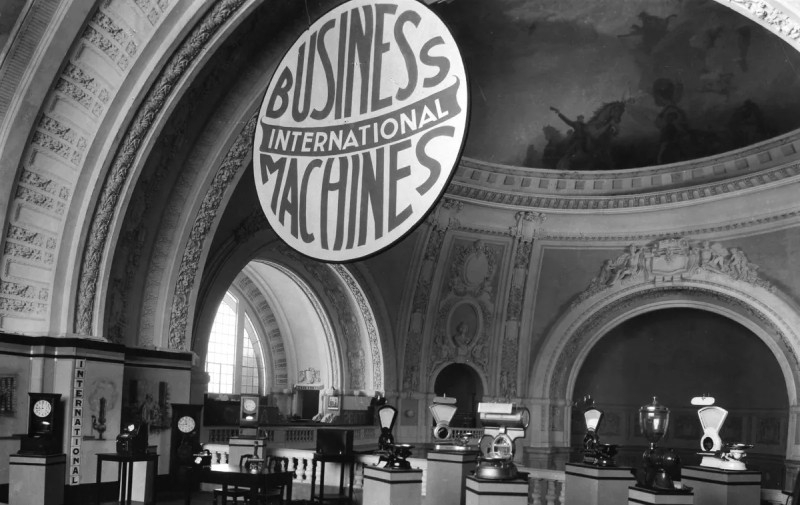
IBM celebrates a century of success: from counting machines to artificial intelligence
The legendary global technology company IBM has its roots in the late nineteenth century. But the official birthday of IBM should still be considered February 15, 1924, when the Computing-Tabulous-Recording Co. was renamed International Business Machines Corp. The history of IBM reflects the development of the computing and IT industry. After all, the term “data processing” appeared more than a century ago, and our ancestors used “office equipment” back in the 1880s.
The rapid development of the economy at the end of the 19th century required coordination of many employees and led to the mechanization of information processing. Typewriters, arithmetic machines, and cash registers began to be widely used. Devices for recording time worked were introduced, and punch card tabulators were used for the 1890 U.S. census.

The history of the companies that later became IBM began at this time of rapid economic development. In 1900, the International Time Recording company was founded and began to produce mechanisms for recording time worked in the United States and Canada.

It was formed and led by an eccentric man named Charles Flint, known for his love of sailing and airplanes.

In 1901, Flint acquired the bench scale manufacturer Computing Scale, which later added cheese slicers and office furniture to its product range. In 1911, Flint’s attention was drawn to the Tabulated Machine company, founded in the 1880s. It produced equipment for tabulating punch cards, a revolutionary technology that was desperately needed by large businesses and government agencies for large-scale events such as census, inventory control, and logistics.

Flint merged all three companies to create the Computing-Tabulous-Recording organization, or C-T-R. Each company’s business was booming, but they did not coordinate their efforts or utilize each other’s assets and talents. Flint persuaded the board of directors to hire a professional manager to develop the single business. In 1914, C-T-R was headed by Thomas Watson Sr. a successful sales manager who had worked for two decades in one of the most advanced companies of the early 20th century, National Cash Register.

The outbreak of World War I blocked sales in Europe, but not in the United States, where government and private company demand for C-T-R products grew rapidly. The end of the war opened up a huge market in Europe, as well as smaller markets in South America and parts of Asia. Despite a brief downturn in the early 1920s, C-T-R grew into a serious and well-run high-tech data processing enterprise, based on Watson’s concept of “speed, accuracy and flexibility”, where the customer always came first.

In 1914, the company’s revenue was $4 million (about $120 million today) with 1,346 employees; in 1920, revenue was $14 million (about $420 million today) with 2,731 employees. And over the next six decades, the company continued to grow at a steady pace. It was only in the late 1980s that the company faced declining revenues (already in the billions of dollars) and the need to reduce its workforce, which had grown to more than 400,000 employees by then.
On February 13, 1924, Watson published a letter to employees announcing the name change, which stated: “Our new name is particularly well adapted and suited to our business, given the speed of our growth, the consistent development of applications to our business, and the products covering a wide range in the business technology field.” On February 15, 1924, The Wall Street Journal published a notice of registration of International Business Machines Corp. that took over the business and assets of Computing-Tabulous-Recording Co. It is interesting to note that in Canada, the company adopted the IBM name back in 1917.

Watson and his colleagues spent the remainder of the 1920s and 1930s creating a brand image that reflected their positive outlook and plans for the future. They conducted educational activities, invented new products, hired people, expanded operations, overcame the Great Depression, and were among the first to face an antitrust challenge in the 1930s. The name change ultimately marked the beginning of a larger-scale transformation. Watson stated that IBM wants to become a major player in its industry and a leading international corporation. And so it happened.

